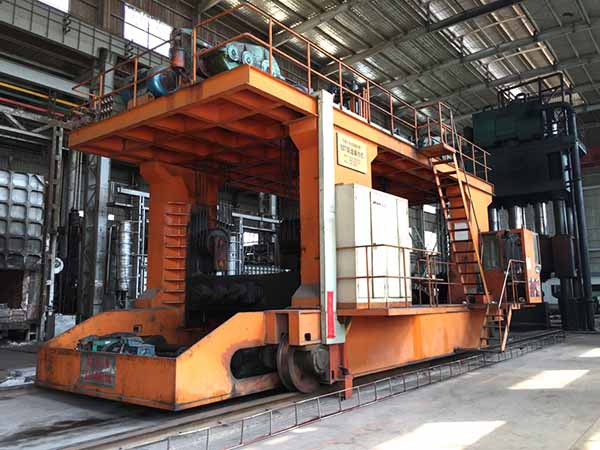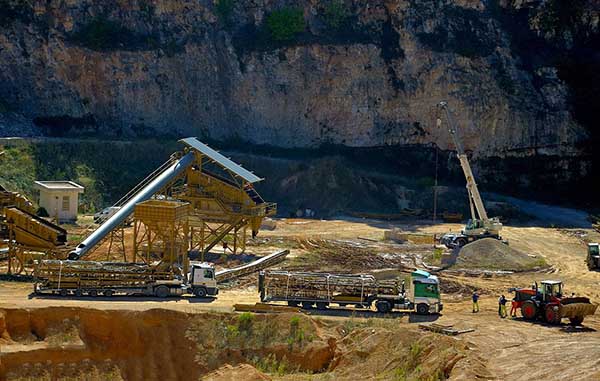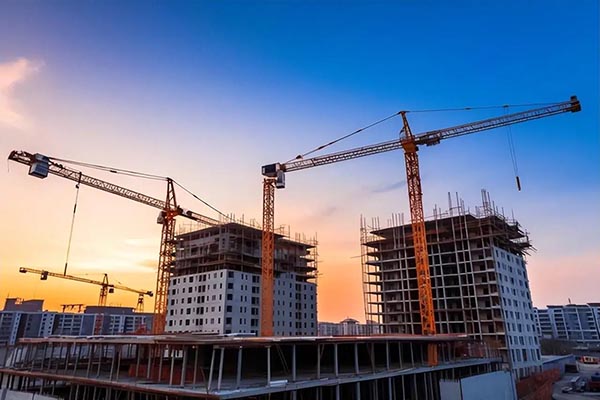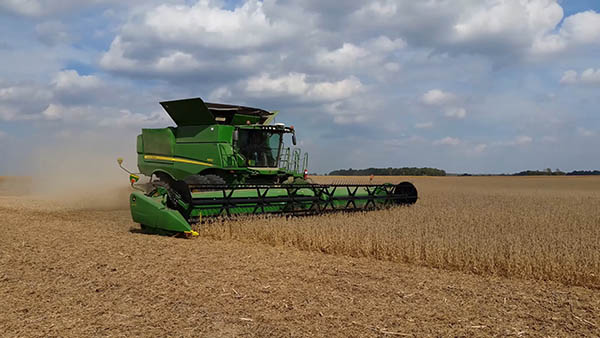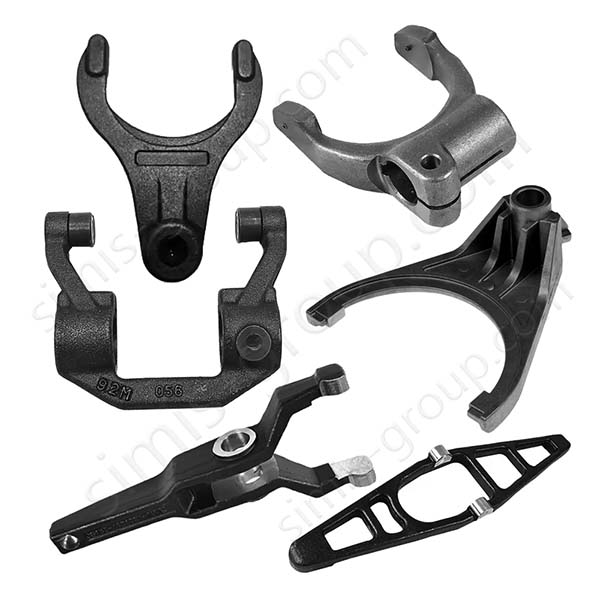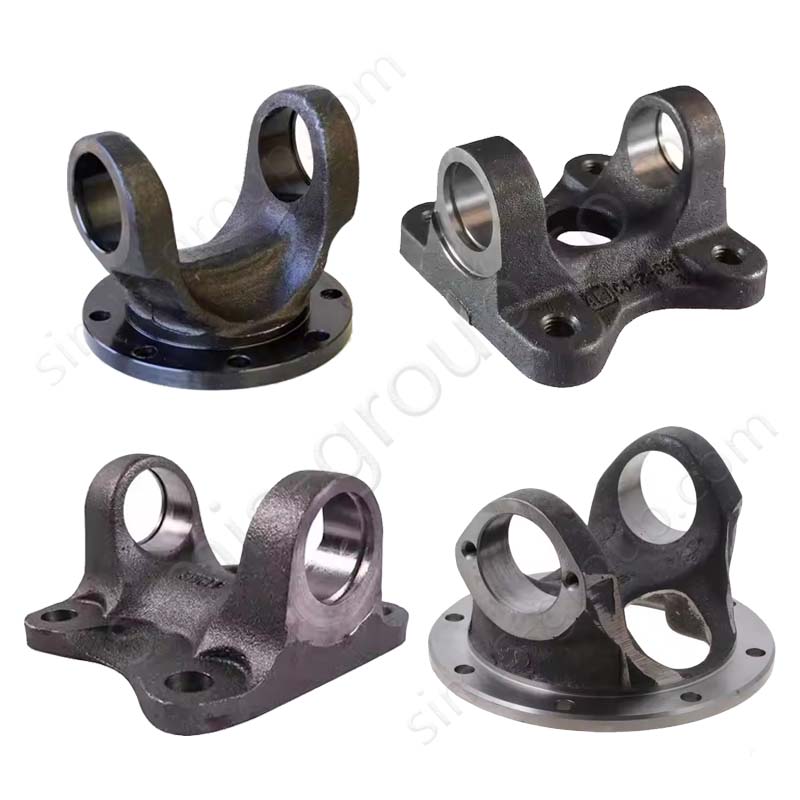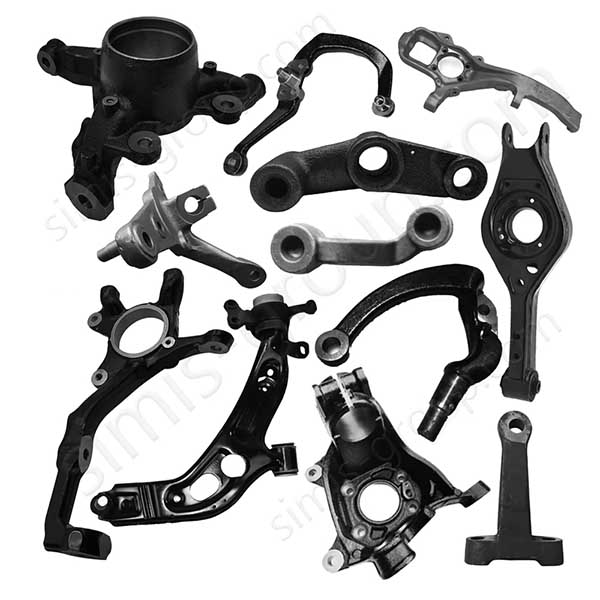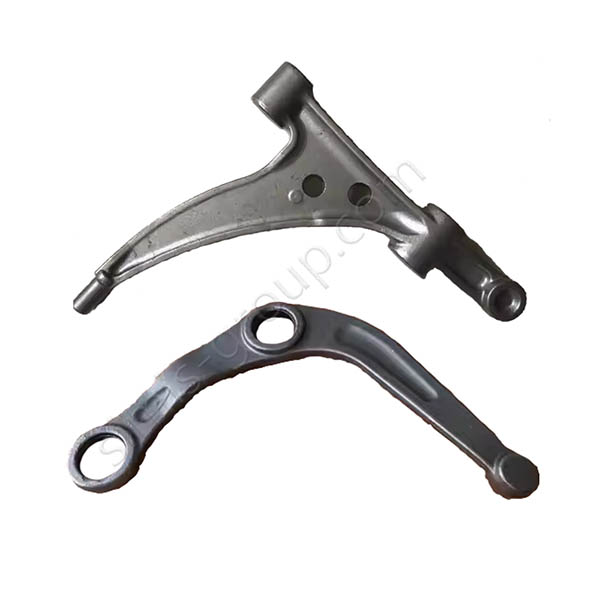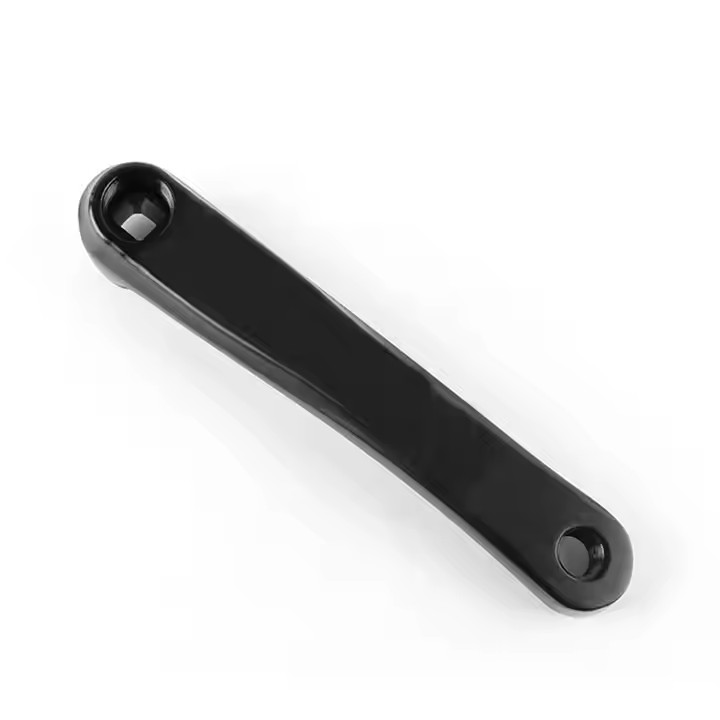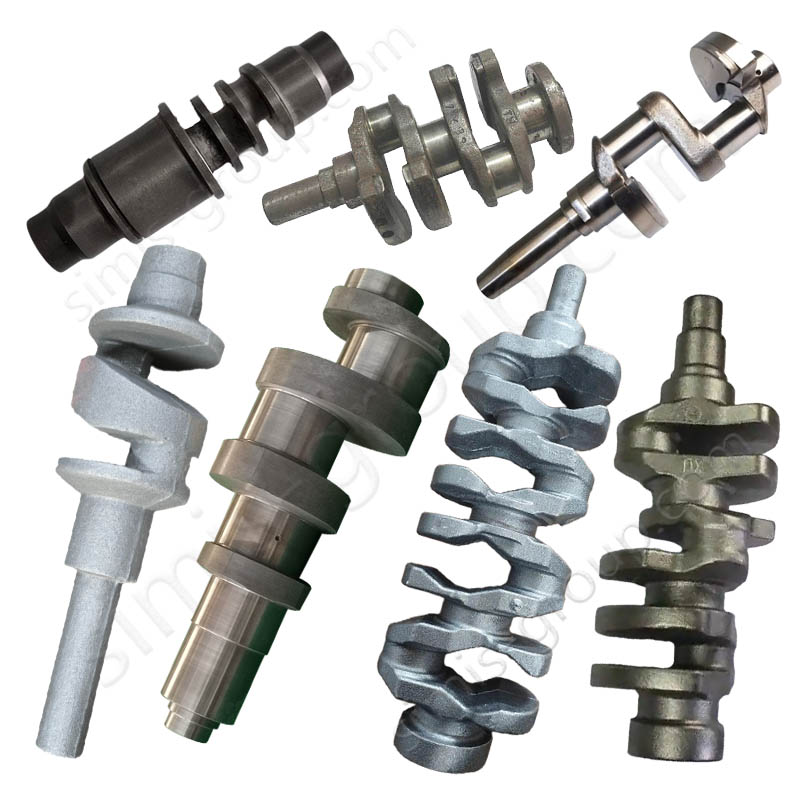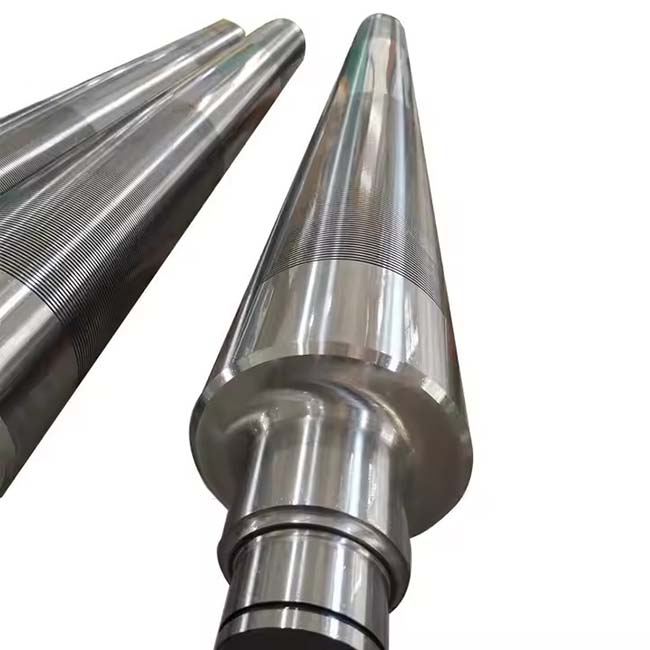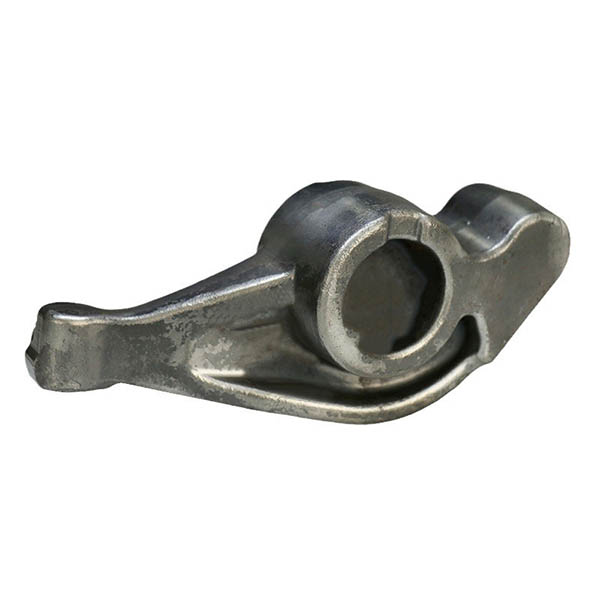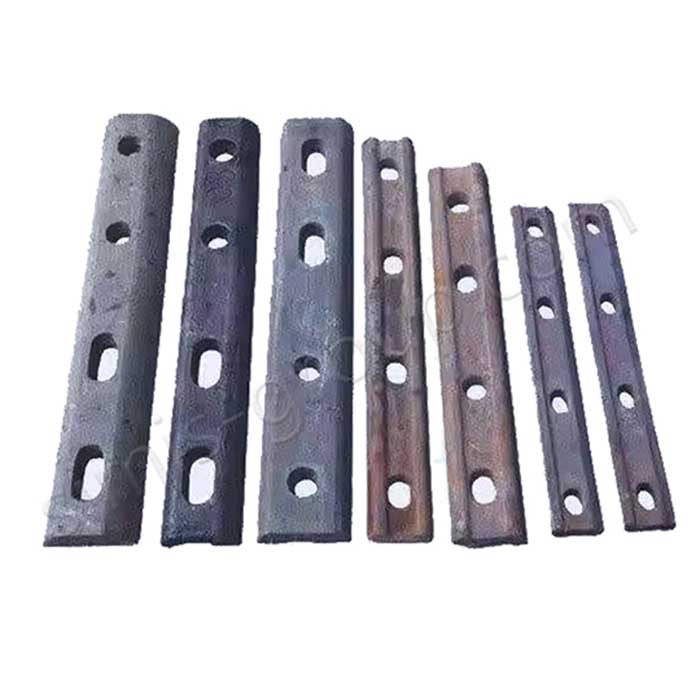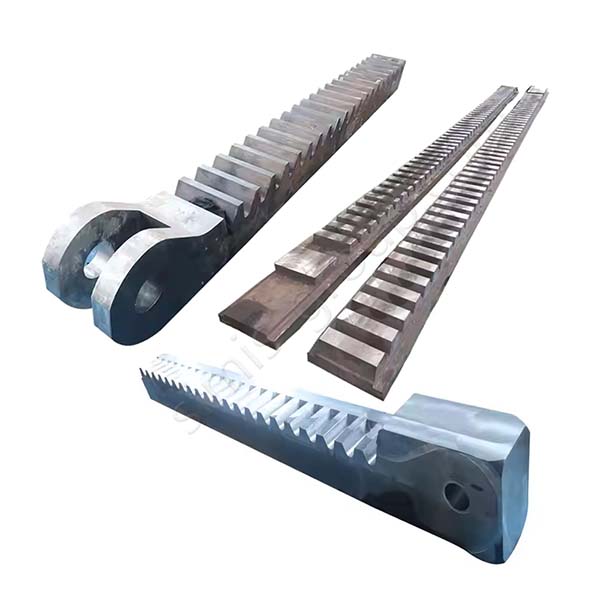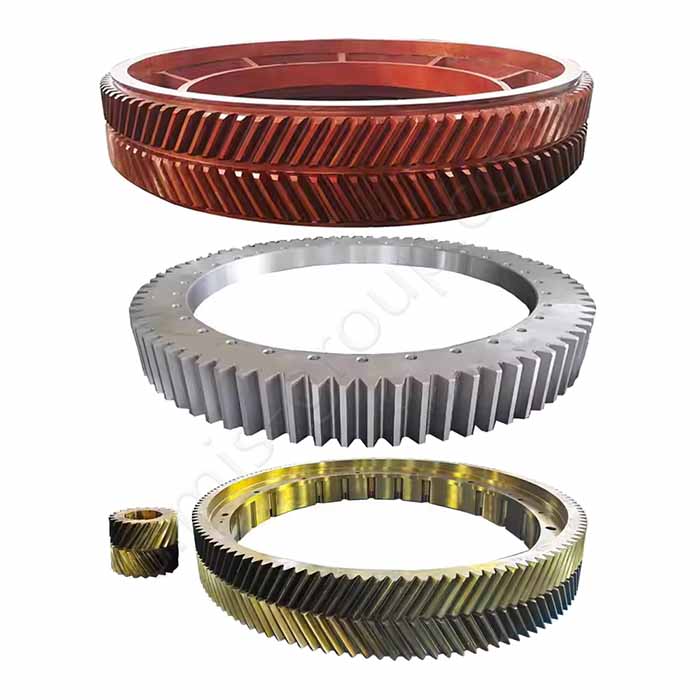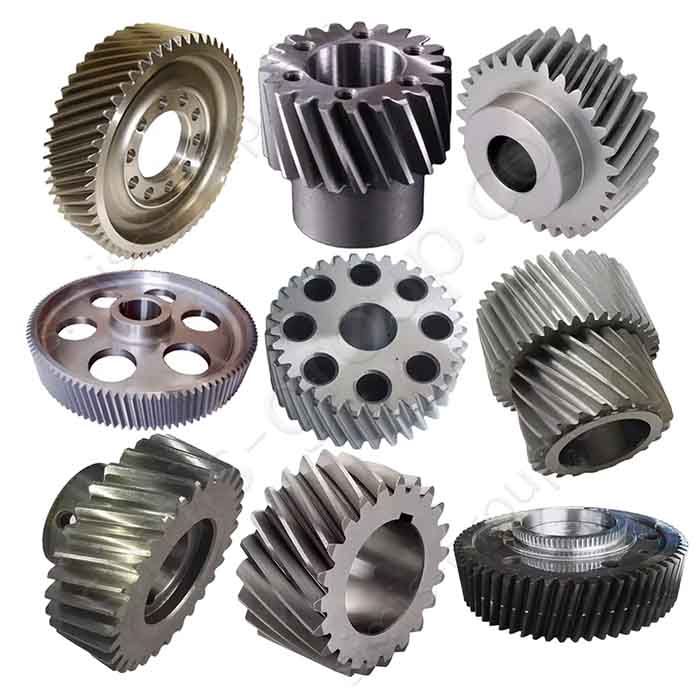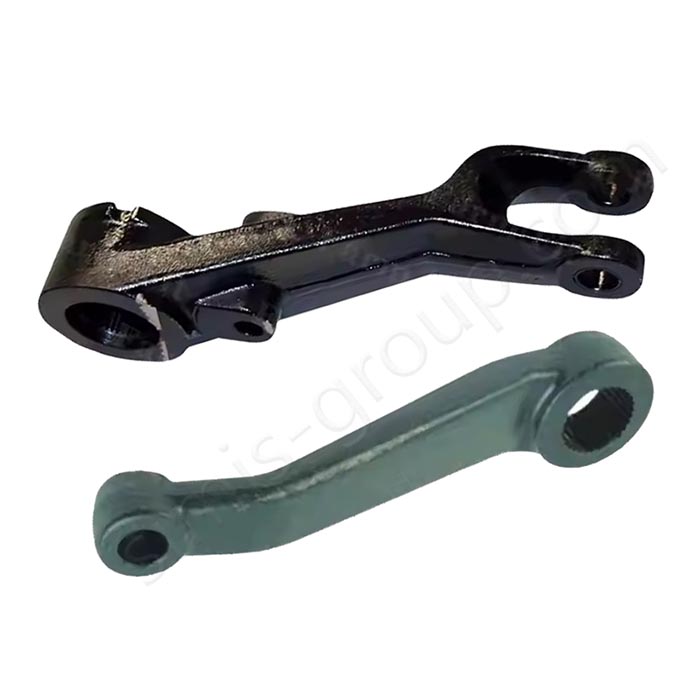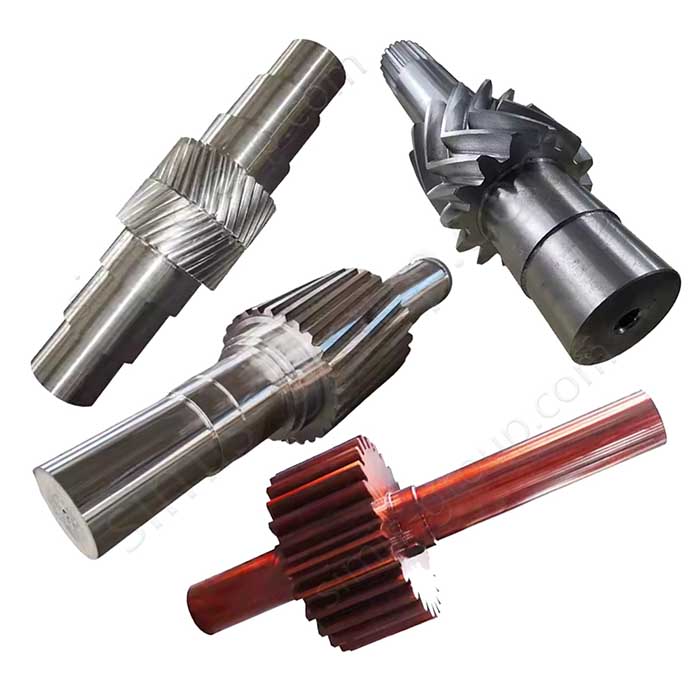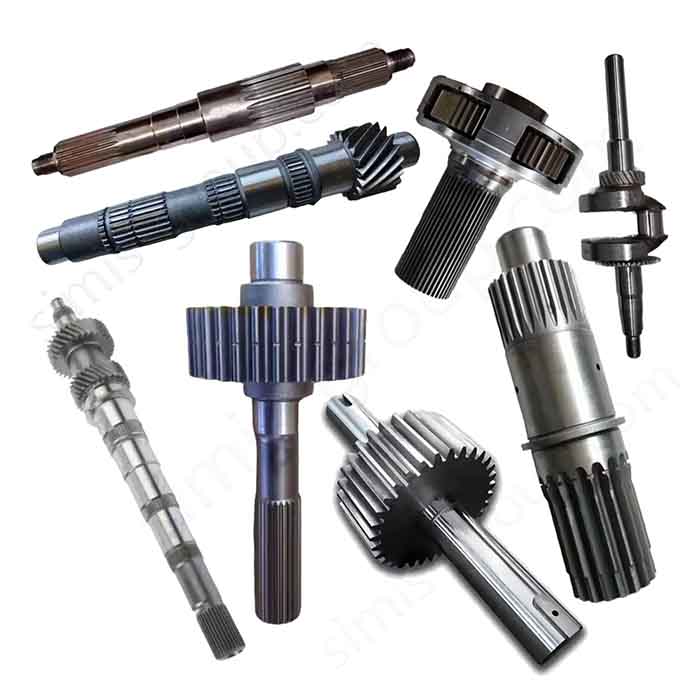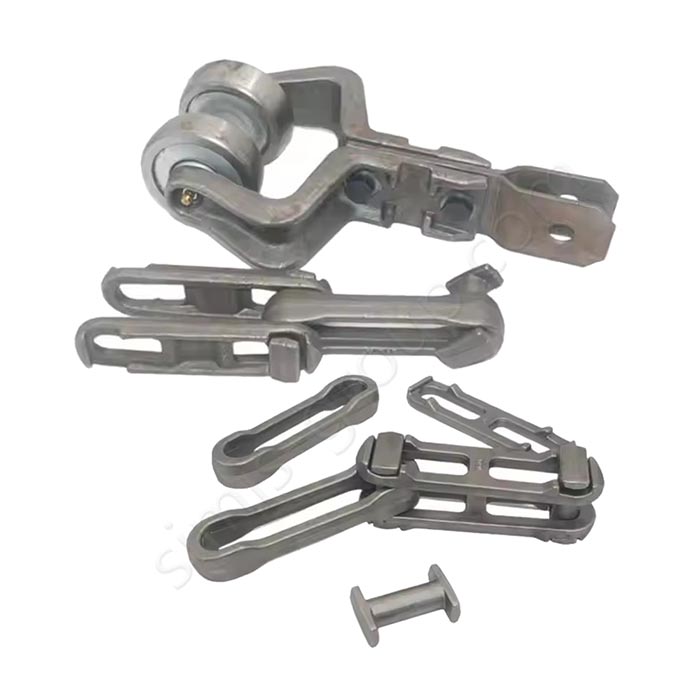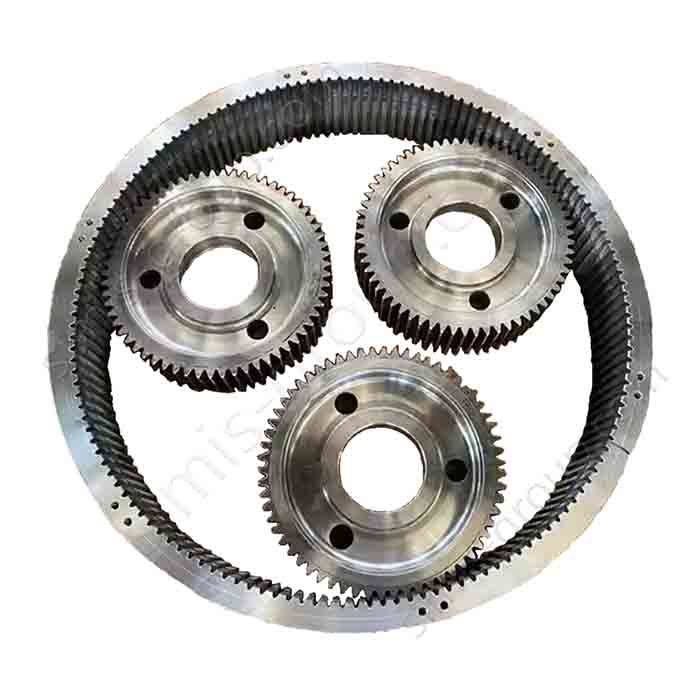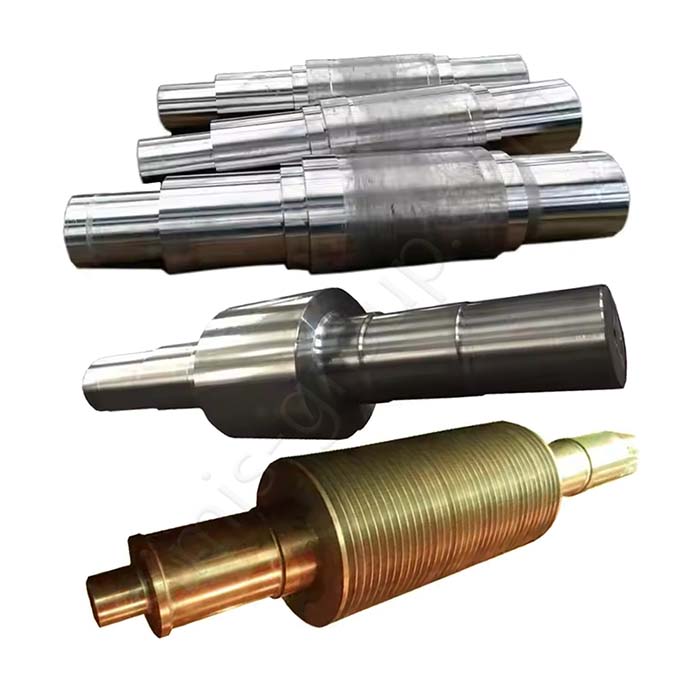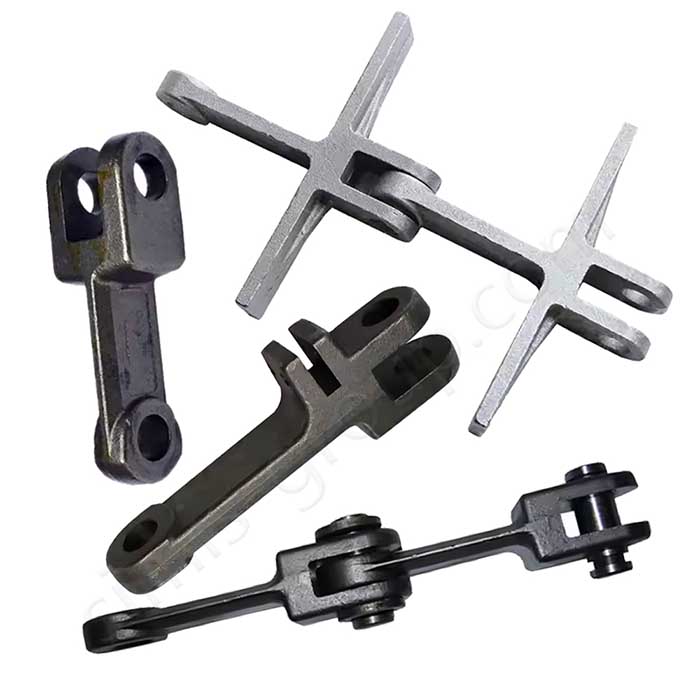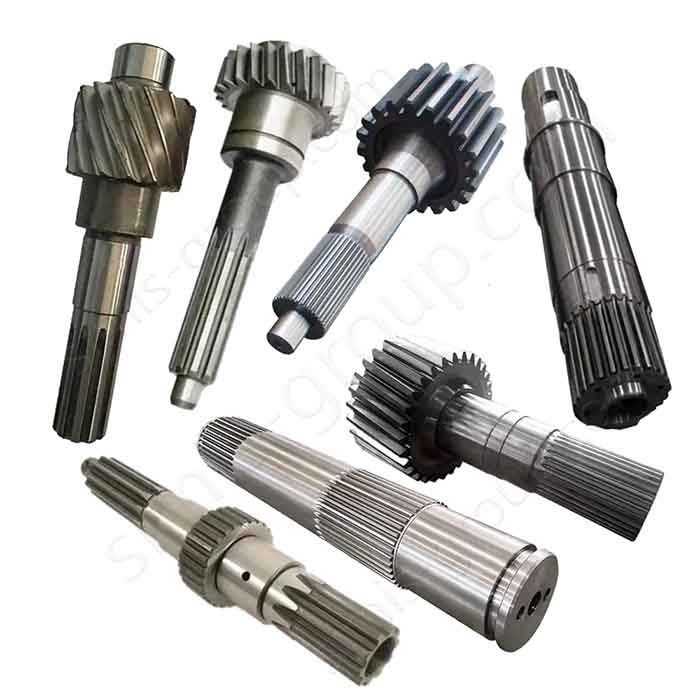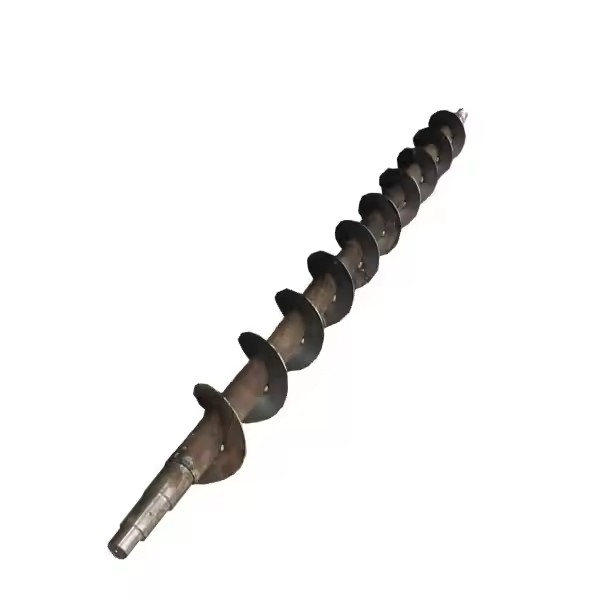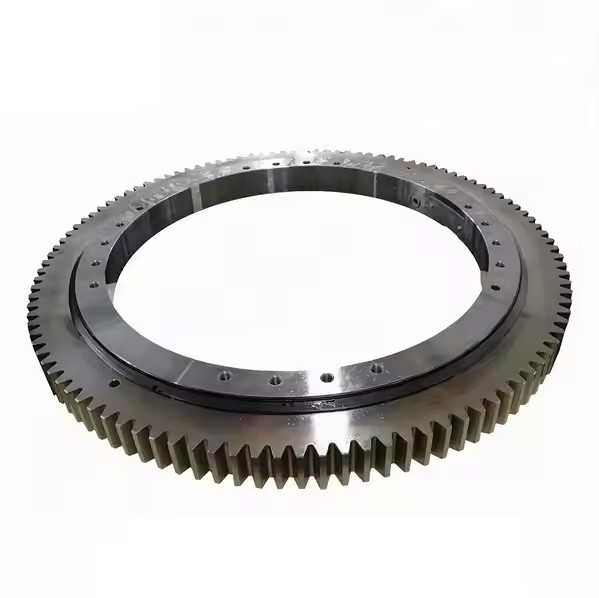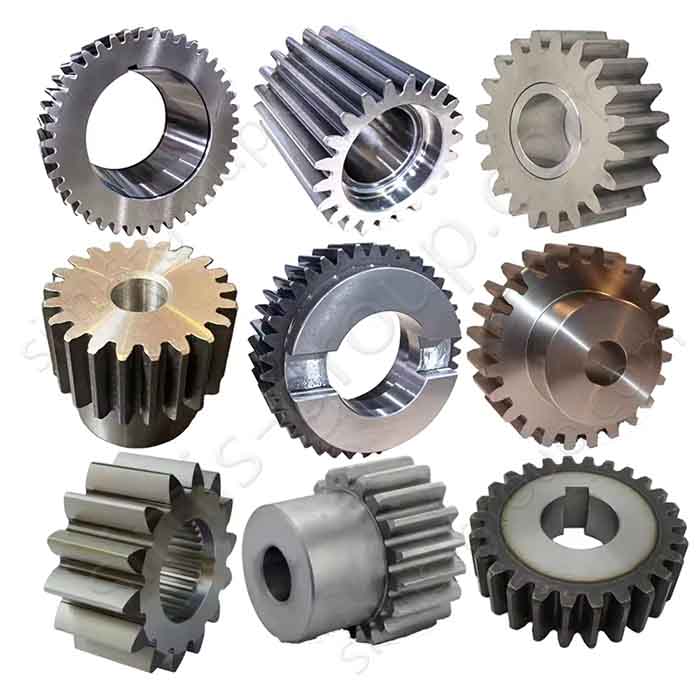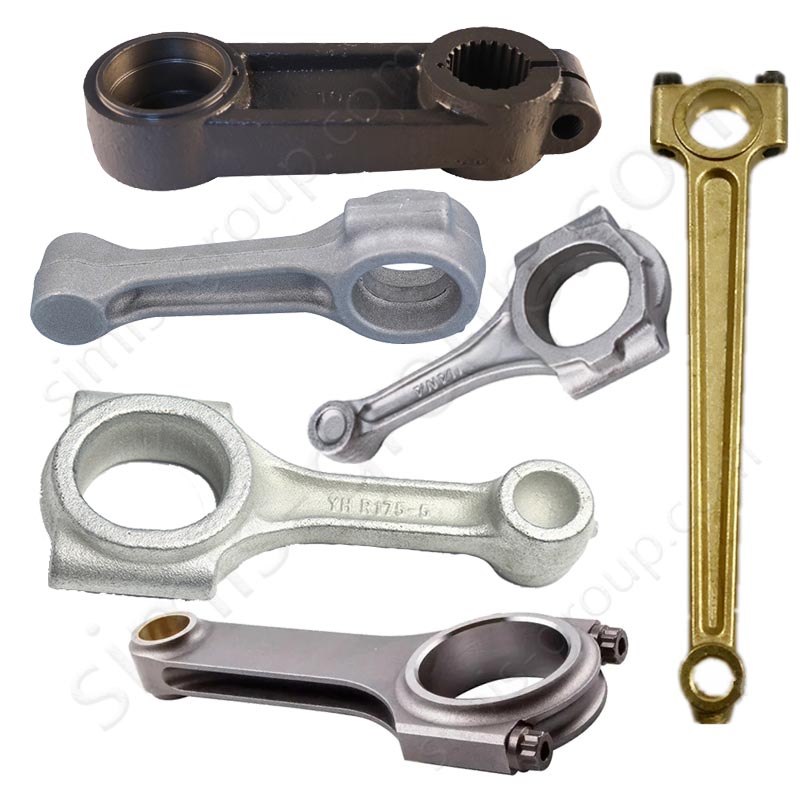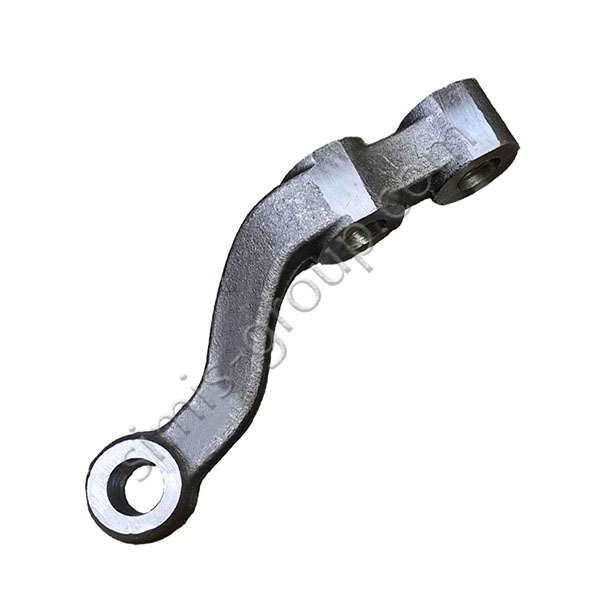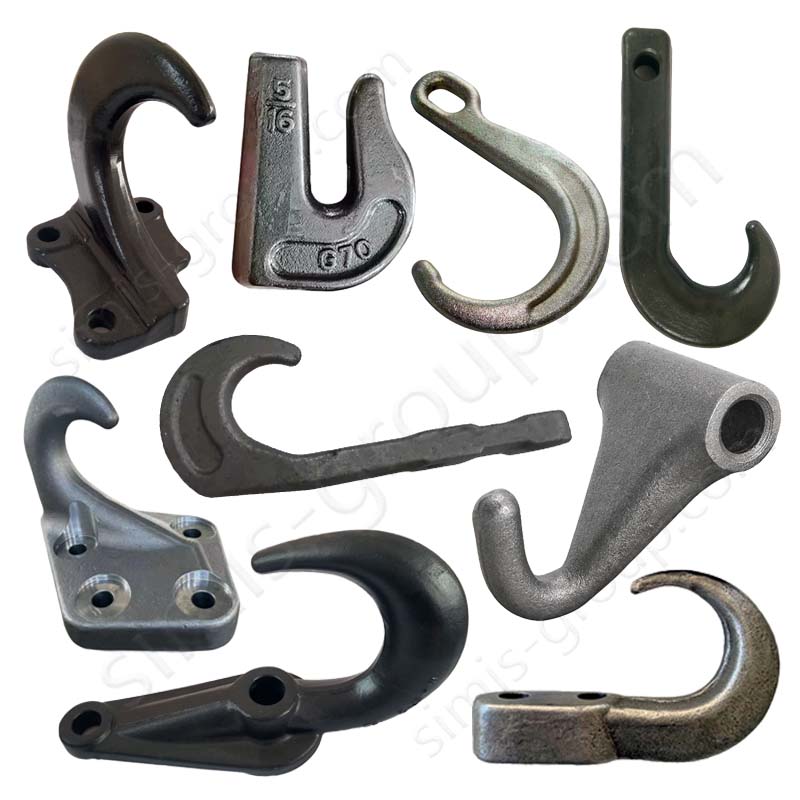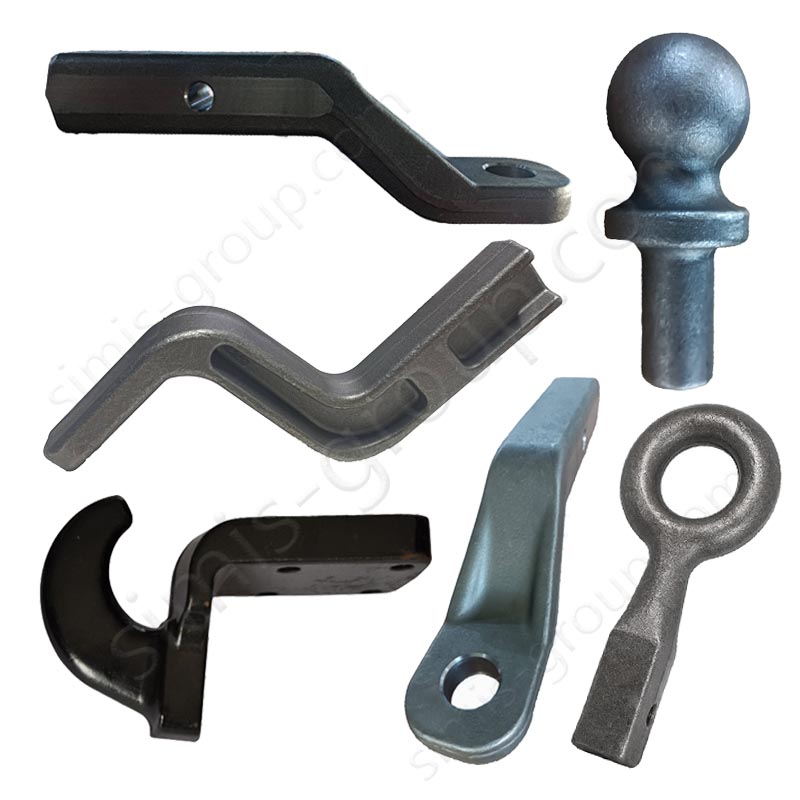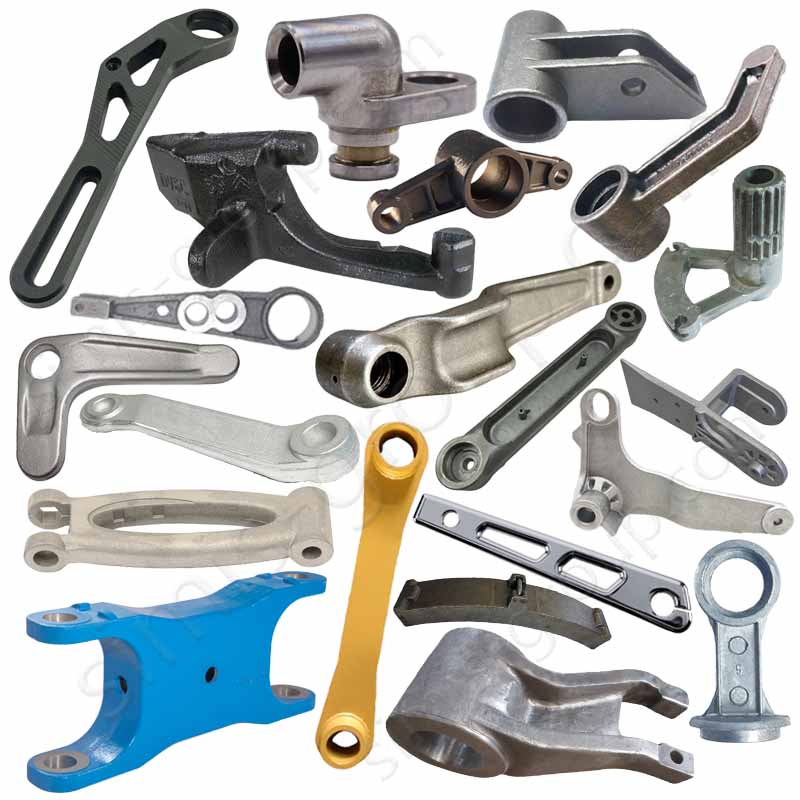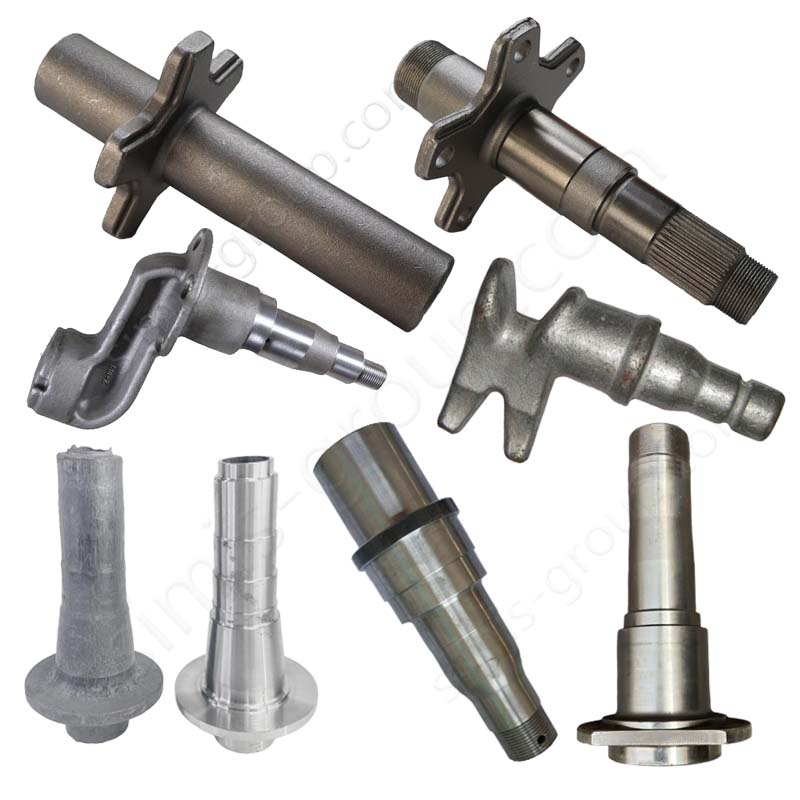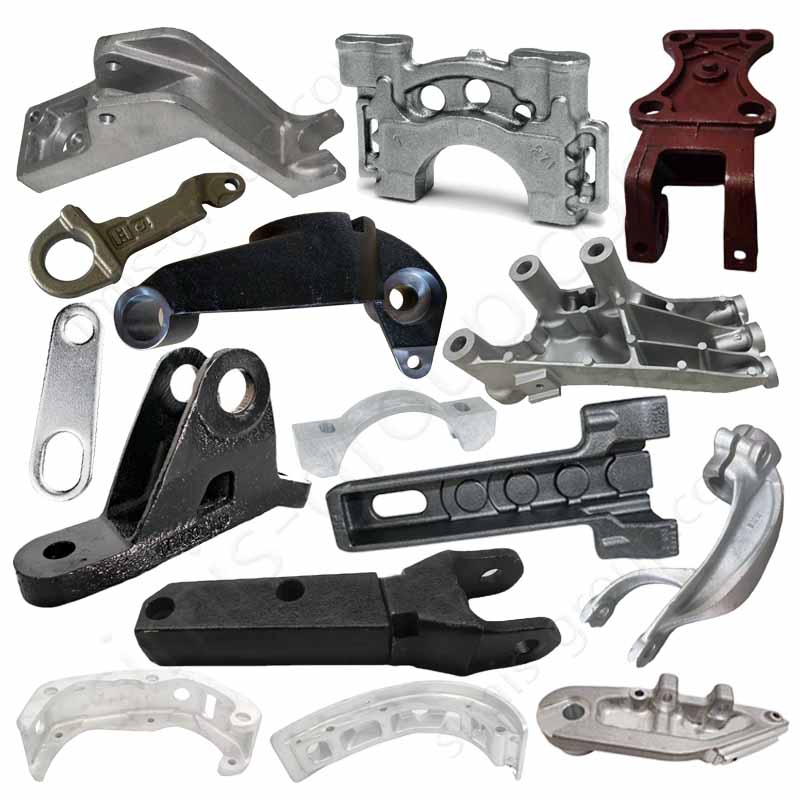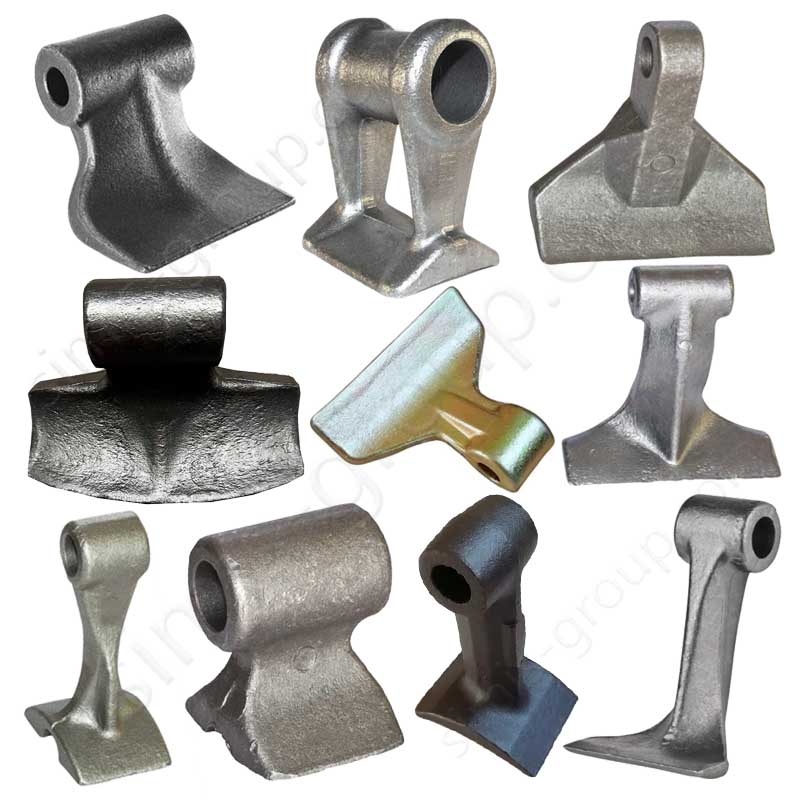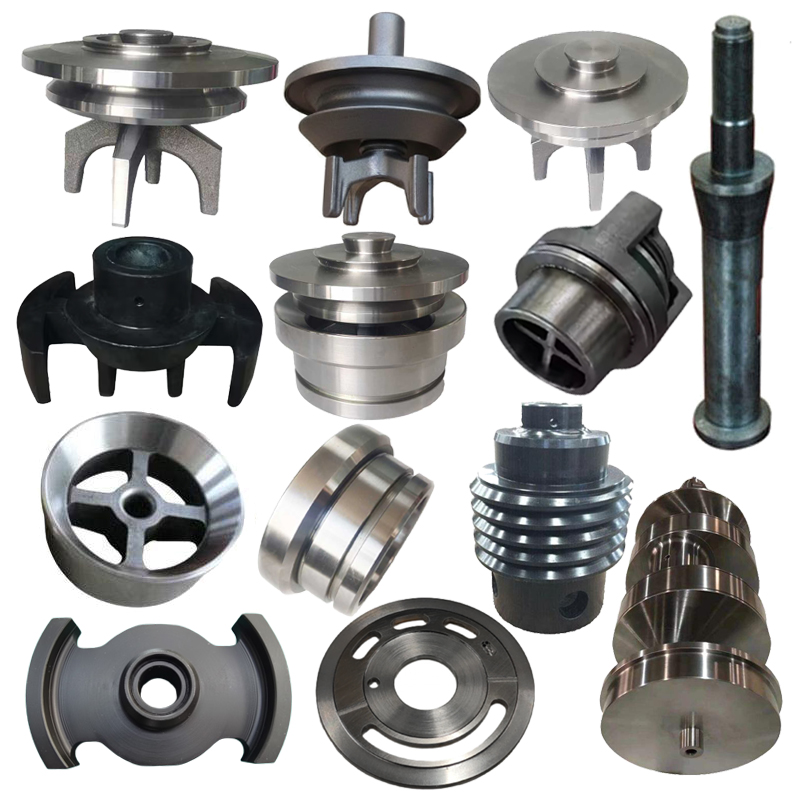Manufacturing Process of Steel Forging Parts
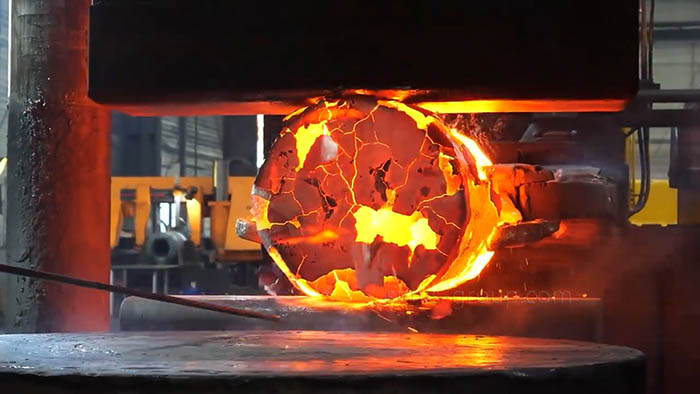
Steel Open-die Forging
Steel open-die forging works by heating steel first. A hammer or press then hits the metal directly. This force slowly shapes the steel into the final size and shape needed.
Highly Flexible: No fixed mold is needed. We can make steel forgings of many different shapes.
Large and Strong: It can make very large, high-strength steel parts.
Low Cost for Small Jobs: The cost is low. It is great for making just one part or small batches of parts.
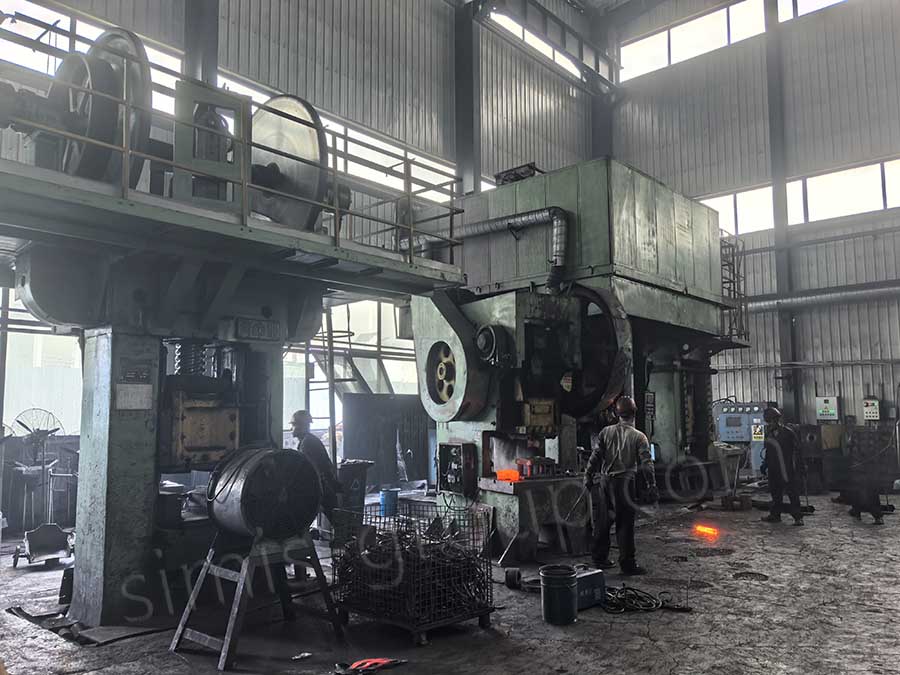
Steel Closed Die Forging
Steel closed-die forging heats the steel to a set temperature. Then, a special closed die presses the metal into shape. This method makes steel forgings that are very precise. They have great strength and a good surface finish.
Mass Production: This process is perfect for making parts in large numbers.
High Accuracy: The steel forgings come out with very exact size and dimensions.
Excellent Strength: The steel forgings have superb mechanical properties.
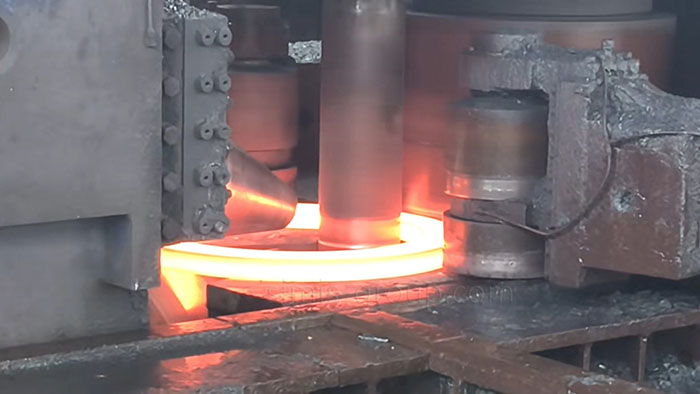
Steel Ring Forging
This forging method makes steel parts shaped like rings. We heat the steel blank first. We put the hot steel into a mold or forging equipment. We then use pressure. This forces the metal to flow and form the final steel ring forging.
Used to make parts with complex shapes easily.
Best for medium and large production runs.
The final forgings have high strength and toughness.
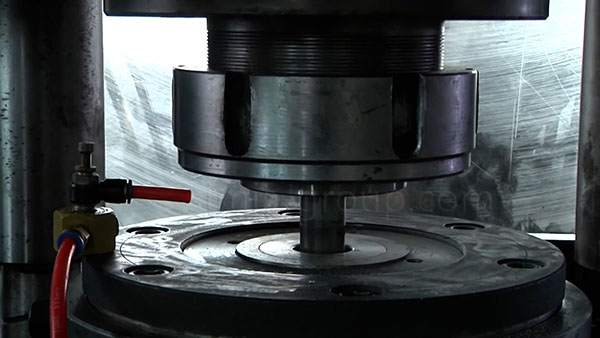
Steel Cold Forging
Steel cold forging shapes a steel blank at room temperature. We use pressure to change the steel's shape without heating it. This method creates parts with high precision and better mechanical strength.
Precise Finish: Parts have very close size limits (tight tolerances) and a good surface finish.
Stronger Steel: It boosts the steel's strength and hardness, making the part last longer.
Saves Material: It cuts down on wasted material and the need for extra machining.
High Performance: The steel forgings come out with higher strength and toughness.
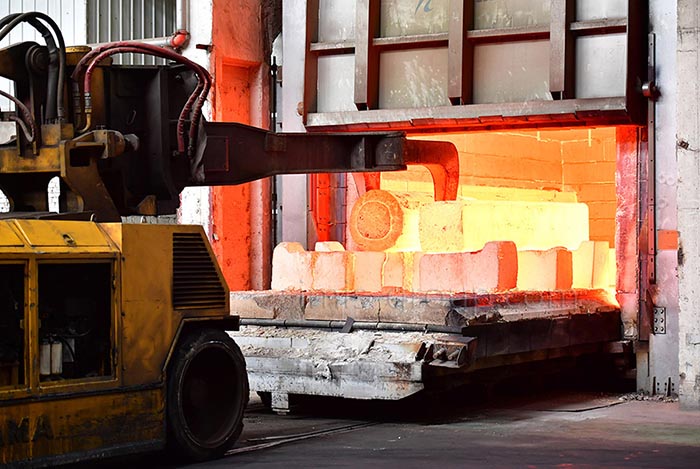
Heat Treatment
Heat treatment changes the inside of steel parts. It uses steps like heating, holding heat, and cooling. This process makes the metal better. It improves how steel parts work, helps them last longer, and makes them easier to shape.
It makes steel parts harder and stronger.
It improves the toughness of the steel.
It boosts wear resistance and corrosion resistance (fighting rust).
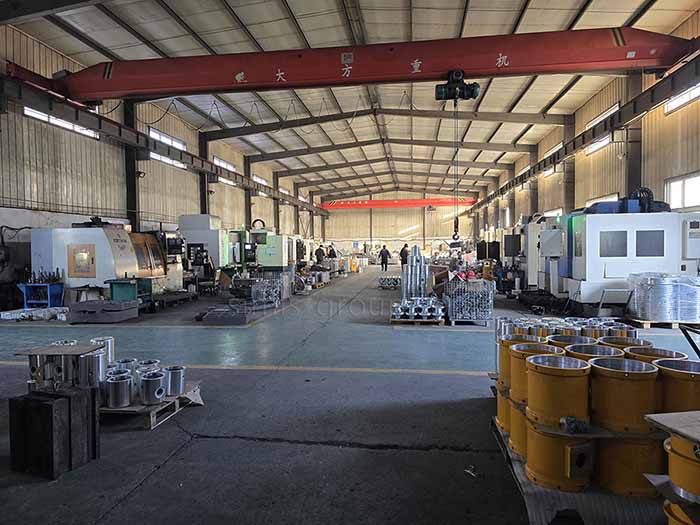
Machining
Machining is a final step for steel forgings. It uses fine tools to improve the parts. This work boosts the accuracy, makes the surface much cleaner, and improves what the forging can do.
It makes the final look better.
It improves the part's structure and function.
It lets us make thin walls and complex shapes.
Different Materials of Steel Forgings
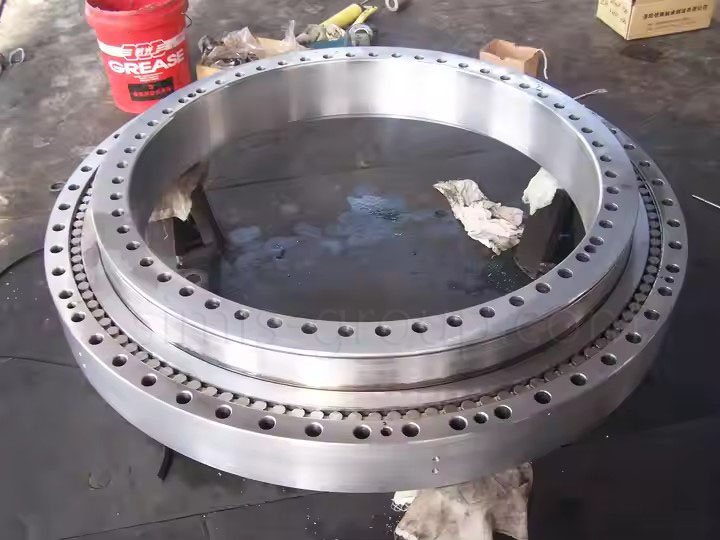
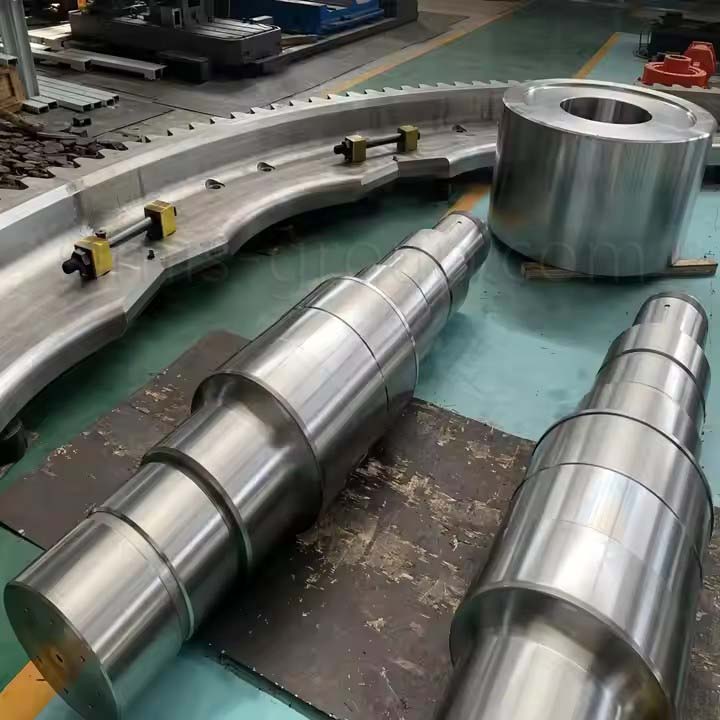
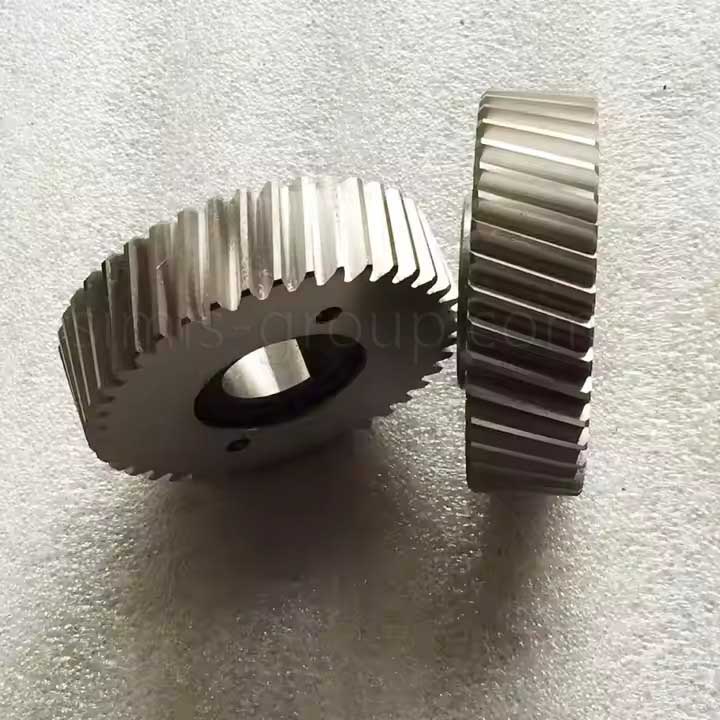
Carbon Steel Forging
Forging Carbon Steel improves the material's internal structure by refining the grain flow and eliminating internal discontinuities. Forging process results in components with maximized strength, high impact resistance, and enhanced fatigue life compared to cast parts.
Forged Carbon Steel Parts from Simis Steel Forging Factory:
Car crankshafts and connecting rods;
Gears and transmission shafts;
Hand tools (wrenches, hammers);
Construction machine parts;
Railway axles and wheels;
Industrial shafts and couplings.
Simis can forged carbon steel types:
Low Carbon Steel Forgings: General structural parts, car body parts, construction hardware, and case-hardened components.
Medium Carbon Steel Forgings: Car crankshafts, connecting rods, gears, axles, and strong structural parts.
High Carbon Steel Forgings: Cutting tools, springs, strong wire, wear parts, and railway wheels.
Free-Cutting Carbon Steel Forgings: High-volume parts that need a lot of machining, like fasteners, fittings, and car parts.
Stainless Steel Forging
Forging Stainless Steel refines the material's grain structure, which enhances its already strong properties. The forging process significantly increases the stainless steel's mechanical strength, improves its fatigue resistance, and maintains its high level of corrosion resistance across the entire component.
Forged Stainless Steel Components by Simis Steel Forging Factory:
High-pressure flanges and valves for oil and gas;
Important marine parts;
Surgical tools and medical implants;
Food processing parts;
Chemical tank components;
Turbine blades.
Simis can forged stainless steel types:
Austenitic Stainless Steel Forgings: Good for chemical, food, and medical parts.
Martensitic Stainless Steel Forgings: Good for strong tools and parts like surgical instruments.
Duplex Stainless Steel Forgings: Good for tough places like offshore oil rigs and chemical plants.
Alloy Steel Forging
Forging alloy steel adds specific elements like nickel and chromium to carbon steel before shaping it. The metal is heated and then pressed into form. This process boosts the steel's strength, hardening ability, and performance in harsh conditions.
Forged Alloy Steel Parts from Simis Steel Forging Factory:
Turbine and rotor shafts;
High-performance gears and pinions;
Heavy-duty axles;
Aircraft landing gear parts;
High-pressure valve bodies for oil and gas;
Specialized tools and dies.
Simis can forged alloy steel types:
Chromium-Molybdenum (Cr-Mo) Steels: Strong shafts, gears, tool joints, and parts needing good toughness in moderate heat.
Nickel-Chromium-Molybdenum (Ni-Cr-Mo) Steels: Critical parts needing the highest strength, toughness, and fatigue life (e.g., aircraft gear and heavy crankshafts).
Bearing Steels (High Carbon Chromium): Parts needing extreme hardness and long rolling fatigue life (e.g., bearings and races).
Boron-Alloyed Steel: Good for fasteners and automotive parts that need good hardenability.
Special Purpose Forged Steel
Special purpose forged steel is designed for jobs with extreme demands. This includes high heat, high pressure, or special wear. These steels use complex alloys (like high nickel, cobalt, or tungsten) to achieve traits that standard steels cannot match.
Special Purpose Forged Steel Components by Simis Steel Forging Factory:
Turbine discs and blades;
Deep-sea drilling tools;
High-temperature fasteners;
Non-magnetic shafts;
Specialized tool steel dies.
Simis can forged special purpose steel types:
High-Nickel Alloys (Superalloys): Gas turbine components, furnace parts, and high-temperature pressure vessels.
Tool Steels (Hot Work / High Speed): Forging dies, hot shear blades, and cutting tools that run at high temperatures.
Maraging Steels: Parts needing ultra-high strength and good toughness with simple heat treatment.
Non-Magnetic Steels: Parts for mining and electrical gear where a magnetic field must be avoided.
Carbon Steel Forging
Forging Carbon Steel improves the material's internal structure by refining the grain flow and eliminating internal discontinuities. Forging process results in components with maximized strength, high impact resistance, and enhanced fatigue life compared to cast parts.
Forged Carbon Steel Parts from Simis Steel Forging Factory:
Car crankshafts and connecting rods;
Gears and transmission shafts;
Hand tools (wrenches, hammers);
Construction machine parts;
Railway axles and wheels;
Industrial shafts and couplings.
Simis can forged carbon steel types:
Low Carbon Steel Forgings: General structural parts, car body parts, construction hardware, and case-hardened components.
Medium Carbon Steel Forgings: Car crankshafts, connecting rods, gears, axles, and strong structural parts.
High Carbon Steel Forgings: Cutting tools, springs, strong wire, wear parts, and railway wheels.
Free-Cutting Carbon Steel Forgings: High-volume parts that need a lot of machining, like fasteners, fittings, and car parts.
Stainless Steel Forging
Forging Stainless Steel refines the material's grain structure, which enhances its already strong properties. The forging process significantly increases the stainless steel's mechanical strength, improves its fatigue resistance, and maintains its high level of corrosion resistance across the entire component.
Forged Stainless Steel Components by Simis Steel Forging Factory:
High-pressure flanges and valves for oil and gas;
Important marine parts;
Surgical tools and medical implants;
Food processing parts;
Chemical tank components;
Turbine blades.
Simis can forged stainless steel types:
Austenitic Stainless Steel Forgings: Good for chemical, food, and medical parts.
Martensitic Stainless Steel Forgings: Good for strong tools and parts like surgical instruments.
Duplex Stainless Steel Forgings: Good for tough places like offshore oil rigs and chemical plants.
Alloy Steel Forging
Forging alloy steel adds specific elements like nickel and chromium to carbon steel before shaping it. The metal is heated and then pressed into form. This process boosts the steel's strength, hardening ability, and performance in harsh conditions.
Forged Alloy Steel Parts from Simis Steel Forging Factory:
Turbine and rotor shafts;
High-performance gears and pinions;
Heavy-duty axles;
Aircraft landing gear parts;
High-pressure valve bodies for oil and gas;
Specialized tools and dies.
Simis can forged alloy steel types:
Chromium-Molybdenum (Cr-Mo) Steels: Strong shafts, gears, tool joints, and parts needing good toughness in moderate heat.
Nickel-Chromium-Molybdenum (Ni-Cr-Mo) Steels: Critical parts needing the highest strength, toughness, and fatigue life (e.g., aircraft gear and heavy crankshafts).
Bearing Steels (High Carbon Chromium): Parts needing extreme hardness and long rolling fatigue life (e.g., bearings and races).
Boron-Alloyed Steel: Good for fasteners and automotive parts that need good hardenability.
Special Purpose Forged Steel
Special purpose forged steel is designed for jobs with extreme demands. This includes high heat, high pressure, or special wear. These steels use complex alloys (like high nickel, cobalt, or tungsten) to achieve traits that standard steels cannot match.
Special Purpose Forged Steel Components by Simis Steel Forging Factory:
Turbine discs and blades;
Deep-sea drilling tools;
High-temperature fasteners;
Non-magnetic shafts;
Specialized tool steel dies.
Simis can forged special purpose steel types:
High-Nickel Alloys (Superalloys): Gas turbine components, furnace parts, and high-temperature pressure vessels.
Tool Steels (Hot Work / High Speed): Forging dies, hot shear blades, and cutting tools that run at high temperatures.
Maraging Steels: Parts needing ultra-high strength and good toughness with simple heat treatment.
Non-Magnetic Steels: Parts for mining and electrical gear where a magnetic field must be avoided.
Application Of Steel Forgings
Custom Steel Forgings by Simis Forging Factory
Steel Forging Company's Custom Steps
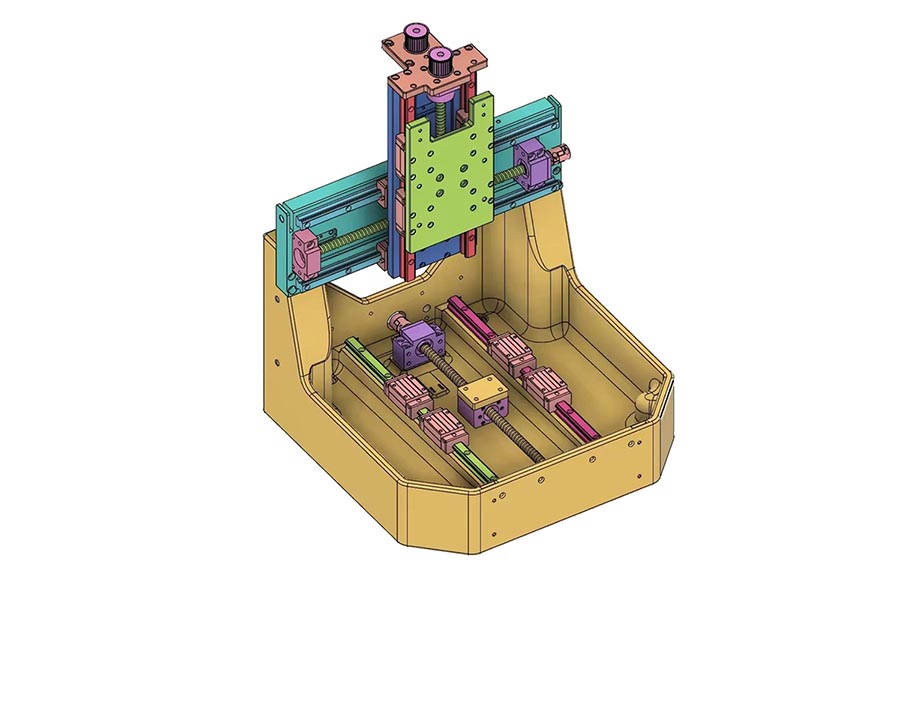
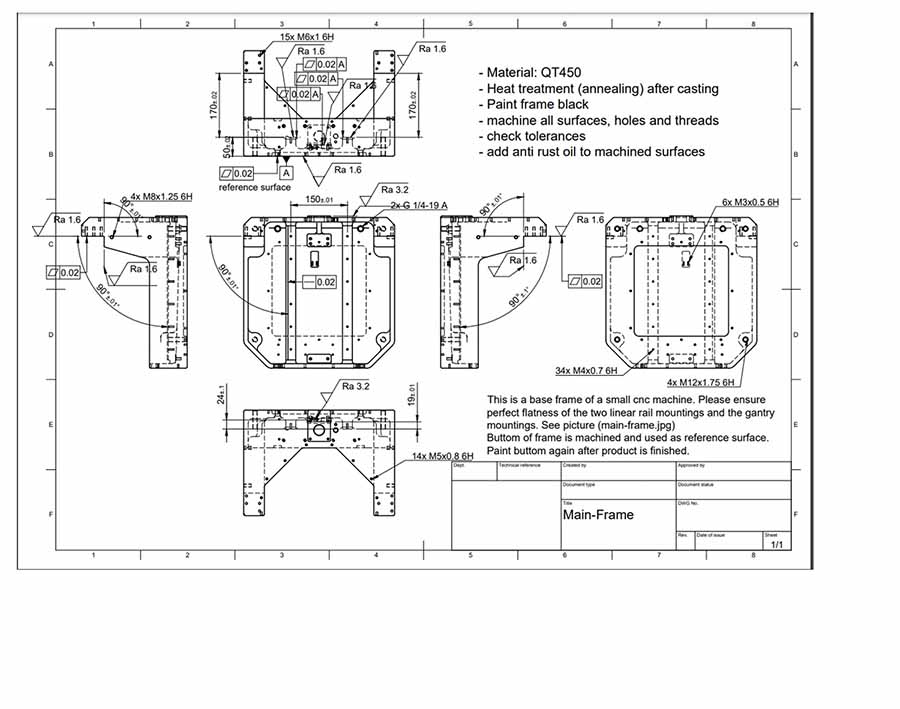
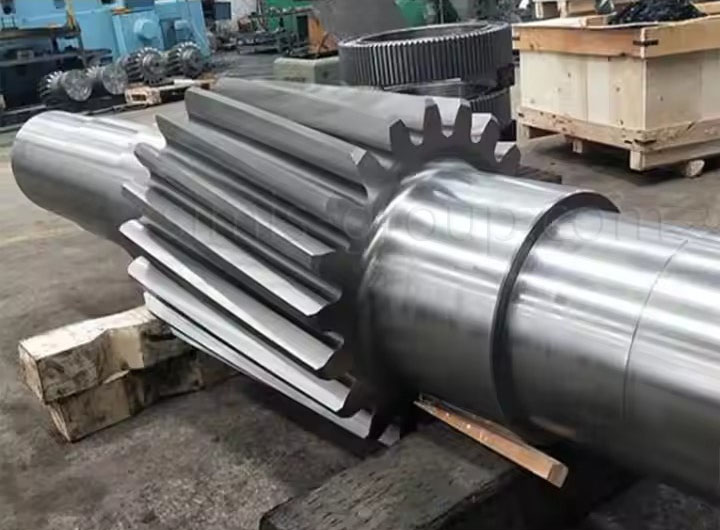
Confirm customization requirements
Design Review and Samples
Simis engineers first check the 3D and plane drawings. This makes sure your design is ready for the forging process. If you have a sample part, we can make the new parts based on that sample.
Define Part Requirements
We confirm what the part needs to do. This includes things like its strength, hardness, wear, and rust resistance. We also set the exact size, tolerance, and finish quality needed for the forged part.
Confirm Forging Material
Our engineers help you pick the right steel material. This choice depends on where the part will be used and your technical needs. We give advice based on material cost, strength, and resistance to wear or rust.
Choose the Forging Process
We select the best forging process for your part. We base this choice on your price goal, the part’s shape, its required dimensional accuracy, and the material.
Make Dies and Samples
We build the forging dies (molds) using your approved drawings or samples. Then, we shape the steel material through the chosen process to produce the first batch of samples.
Full Sample Inspection
The finished samples go through a full check. This confirms they meet all design standards and your quality demands. We give you reports covering size and tolerance inspection, performance testing, chemical composition analysis, and non-destructive testing.
Production and quality control
7. Mass Production
After you check and approve the sample, we start the mass production plan. We get all the materials ready based on your order. We use the exact same forging equipment and process as we did for the sample. This makes sure every single part we make is the same.
8. Quality Control During Production
We run tight quality checks while making the parts. We pull parts for checks often during the process. We test their size, look, and strength. This ensures every batch of forged steel parts is consistent and meets your needs.
9. Final Product Quality Inspection
We use multiple inspectors for the final check. They do many tests on the finished product. These tests cover size accuracy, surface quality, and part strength. This step makes sure all forged steel parts meet your quality standards.
10. Packaging and Delivery
We securely package and ship all approved parts. We pick the right packaging to prevent damage during shipping. We also choose the best delivery method (air, sea, or land) to get your parts to you on time.
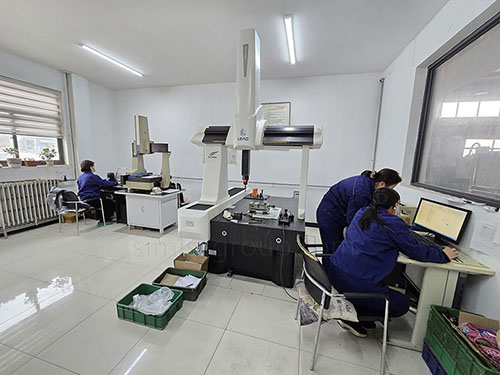
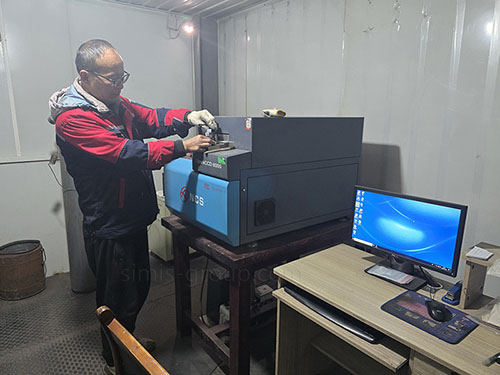
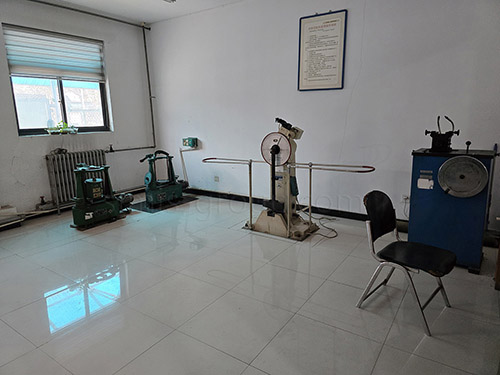
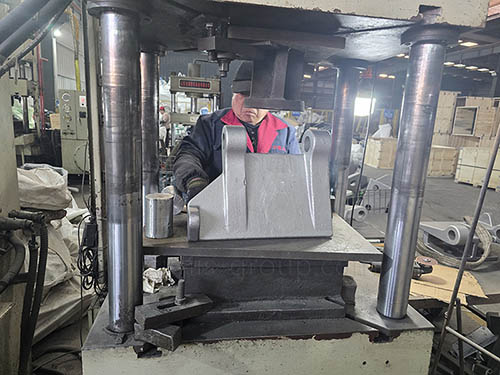
To order custom parts, please email us your design drawings and 3D models. Our team will review the detailed part parameters and the 3D model to provide you with an accurate quote.

